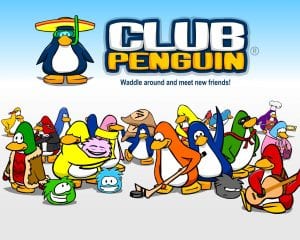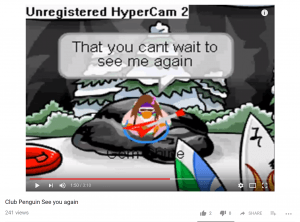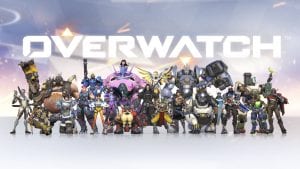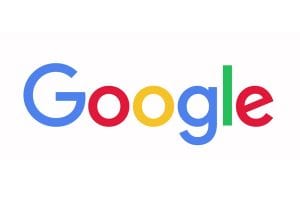I recently came back from a camping trip in Traralgon with my family. It wasn’t in the woods. I had full access to an ensuite bathroom, a sizeable mattress to sprawl on, and, most importantly, decently fast 4G mobile data.
I used 1.5GB of my mobile data on that one rainy Saturday, simply because every time thought of a new lipstick I wanted to buy, or a random question I needed to ask, or when exactly a uni assignment was due, I, without hesitation, would go to Safari and start researching reviews, answers, dates.
To someone like me, raised with the network at my fingertips, it was instinct.
As I mentioned in my last blog post, I grew up with the Internet and hence with networks. I played Dora the Explorer games on Nickelodeon, played dress-ups with online doll makers like The Doll Palace, and, of course, I played Club Penguin.
In Adrian Miles’s ‘Network Literacy: The New Path to Knowledge’, he writes, ‘through such sharing the distinction between consuming and creating content dissolves so unlike books in network literacy we become peers in the system, and indeed to be ‘good’ at network literacies is to contribute as much as it is to consume’ (Miles 2012, p.204).
In my Club Penguin phase, not only did I stalk Mimo777’s cheats and hints blog every time an update was released, I even made Club Penguin music videos, where my penguin would ‘sing’ the lyrics to a Miley Cyrus or Avril Lavigne song in various locations and outfits.
Screenshot from my YouTube video ‘Club Penguin See you again’
‘Network literacy is, in a nutshell, being able to participate as a peer within the emerging knowledge networks that are now the product of the Internet, and to have as ‘deep’ an understanding of the logics or protocols of these networks as we do of print.’ (Miles 2012, p.203). Through these videos, I participated and hence I learned. I became literate.
Hence, I’m not as ashamed of these videos as I perhaps should be because without them, I would’ve never learned how to edit videos. It’s thanks to the Internet and the digital literacy of my 14-year-old gamer brother that I started playing Overwatch, navigated the chat system, knew how to use Discord, and eventually met one of my best friends.
Information used to be tangible, linked to physical objects (like books) or locations (like libraries). It was limited by laws of physics, limits of human ability. Now, information sits in this amorphous space, invisible and omnipresent, here, there and everywhere, all impossibly connected and easy to access (reminds me of our own brains). This is the network of 2018.
My brain is wired to think in this network. People younger than me are even more wired. All the affordances of the network are like second nature; they feel natural. Which, yes, does prompt creativity, given the amount of tools and spaces available for creation, but do these affordances and growing literacy have a downside? Apps can tell you when to sleep and eat. When your aunt’s birthday is. What ingredients you need for tonight’s stir fry. Hell, they can even learn about the inner workings of your physical body and predict the due date of your period. Are the affordances and this literacy in fact spoonfeeding us, reducing our creativity by making us rely on external prompts for guidance?
I don’t know. But to this overabundance of information we can either be a slave, or be the general who weaponises it.
In this week’s tutorial, Nash said my blog posts worked heavily with visuals. Apparently, the images in my blog posts have colour schemes.
…That was not intentional.
Similarly, my writer peers have said my writing has a strong sense of image. I always thought it was from my background as a dancer, an eye for the aesthetic and constructed performance of everything.
Now, I think there’s more to it.
As Nash said in the tutorial, this generation has been ‘visually bombarded’ from a very young age. When he said that, I started instantly noticing the effects. When someone is talking, I process their words so much better if I am simultaneously reading them. I always watch my films with subtitles.
The visual is convenient. It’s fast. And though I still adore reading, I’m finding more and more that, when given the choice, I will choose a YouTube video over the next chapter of my book.
This affordance of the convenience of visual media has become a constraint, for now it is difficult to maintain people’s attention with some sort of visual–hence the rise of Instagram. Has this resulted in text-illiteracy for me? I don’t think so. In fact, I think heavier exposure to visual media has allowed me to better visualise scenes from novels.
One quote I really liked from Miles was:
‘Network literacy is…understanding a kind of writing that is a social, collaborative process rather than an act of an individual in solitary’ (Miles 2012, p.208)
I’m still getting used to the fact that people (even if it’s just Nash) are reading my blog posts every week. I might have been network literate with Club Penguin, but there are still elements I need to learn in terms of blogs and the wider internet.
_______________________________
References
Miles, A 2012, ‘Network Literacy: The New Path to Knowledge’, Soft Cinematic Hypertext (Other Literacies), RMIT University, pp.201-208.





